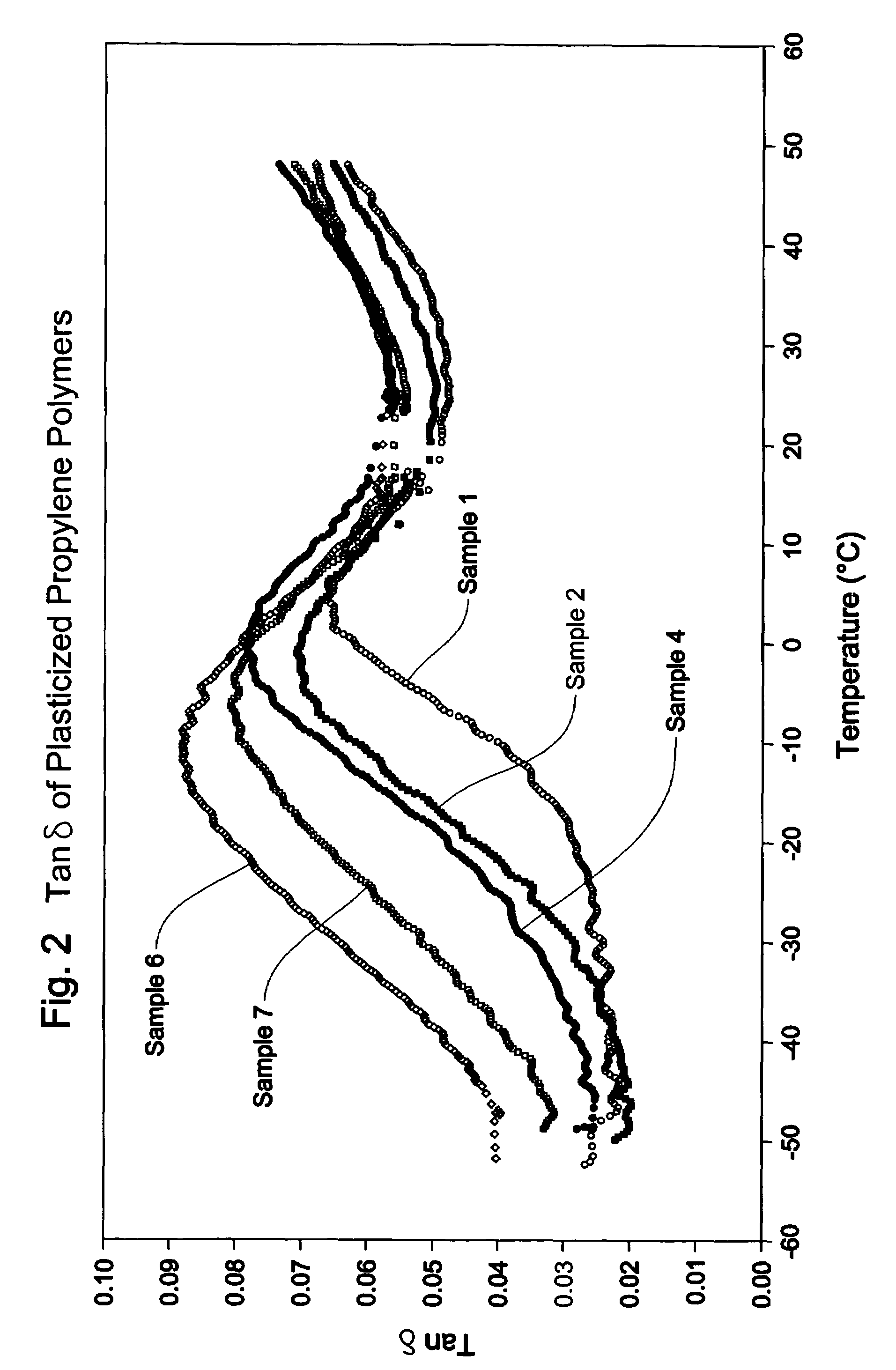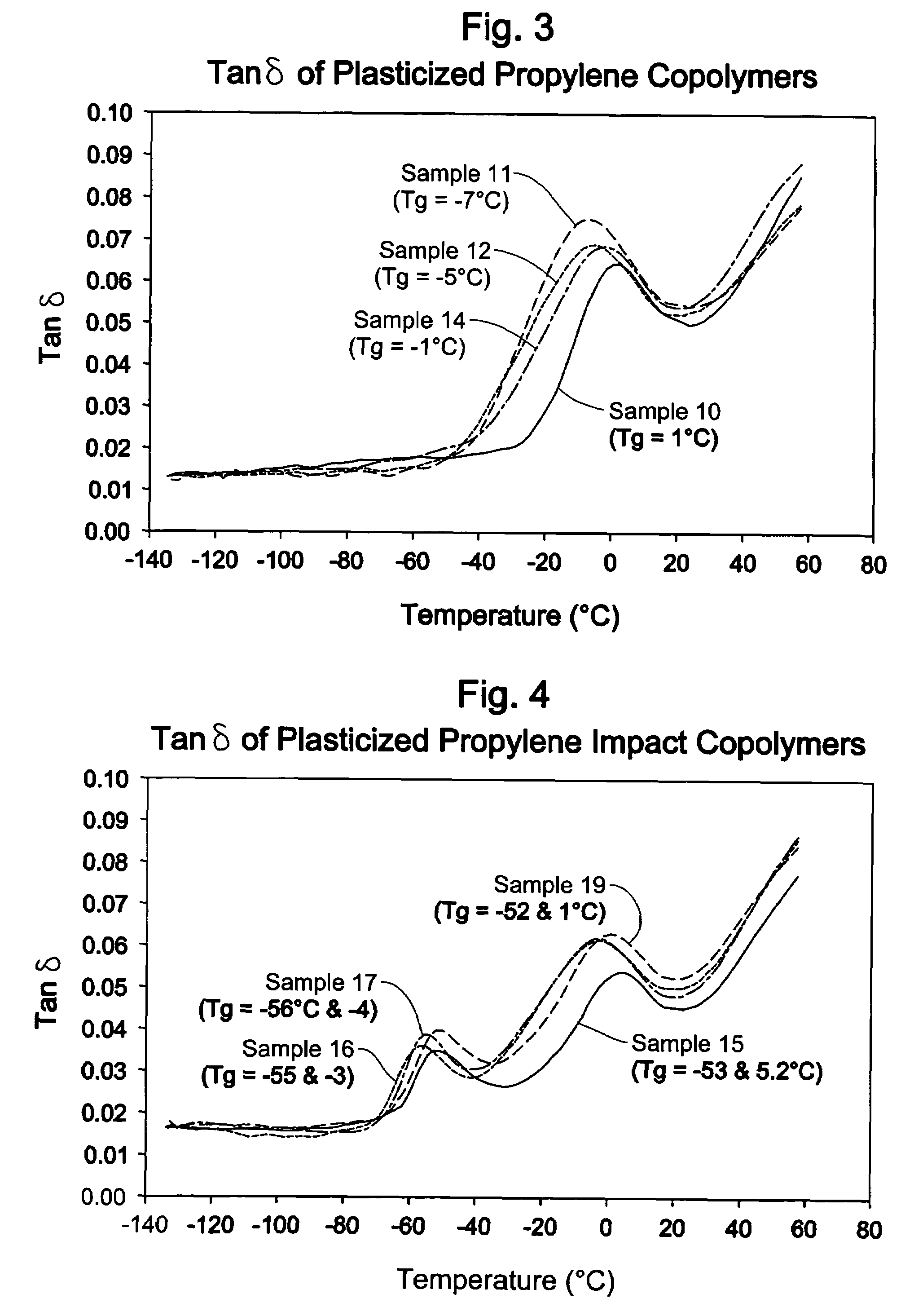Fibers and nonwovens from plasticized polyolefin compositions
a technology of polyolefin composition and fibers, applied in textiles, papermaking, textiles and papermaking, etc., can solve the problems of polyolefin brittleness, the glass transition temperature is relatively high, and the homopolymer and some propylene copolymer of propylene is difficult to achiev
- Summary
- Abstract
- Description
- Claims
- Application Information
AI Technical Summary
Benefits of technology
Problems solved by technology
Method used
Image
Examples
examples
[0345]The present invention, while not meant to be limiting by, may be better understood by reference to the following examples and tables. The polymers and fluids used in the examples are described in Tables 4 and 5.
Examples in Tables 6-14 Based on Blends Made Using the Extruder Method
[0346]Samples 1-9 in Tables 6 and 9 were blended using the Extruder Method; the additive package contained 600 ppm of Irganox 1076 and 260 ppm of calcium stearate; a 57 mm twin-screw extruder was used at an extrusion temperature of 230° C. Samples 10-14 in Tables 7 and 10 were blended using the Extruder Method; the additive package contained 825 ppm calcium stearate, 800 ppm of Ultranox 626, 500 ppm of Tinuvin 622, and 2500 ppm of Millad 3940; a 30 mm twin-screw extruder was used at an extrusion temperature of 216° C. Samples 15-19 in Tables 8 and 11 were blended using the Extruder Method; the additive package contained 800 ppm of calcium stearate, 1500 ppm of Irganox 1010, 500 ppm of Ultranox 626, an...
PUM
 Login to View More
Login to View More Abstract
Description
Claims
Application Information
 Login to View More
Login to View More - R&D
- Intellectual Property
- Life Sciences
- Materials
- Tech Scout
- Unparalleled Data Quality
- Higher Quality Content
- 60% Fewer Hallucinations
Browse by: Latest US Patents, China's latest patents, Technical Efficacy Thesaurus, Application Domain, Technology Topic, Popular Technical Reports.
© 2025 PatSnap. All rights reserved.Legal|Privacy policy|Modern Slavery Act Transparency Statement|Sitemap|About US| Contact US: help@patsnap.com



